
Gerard Peter Kuiper was a Dutch astronomer, planetary scientist, selenographer, author and professor. He is the eponymous namesake of the Kuiper belt.

Prof Jacobus Cornelius Kapteyn FRS FRSE LLD was a Dutch astronomer. He carried out extensive studies of the Milky Way and was the discoverer of evidence for galactic rotation. Kapteyn was also among the first to suggest the existence of dark matter using stellar velocities as early as 1922.

Council communism is a current of communist thought that emerged in the 1920s. Inspired by the November Revolution, council communism was opposed to state socialism and advocated workers' councils and council democracy. It is regarded as being strongest in Germany and the Netherlands during the 1920s.
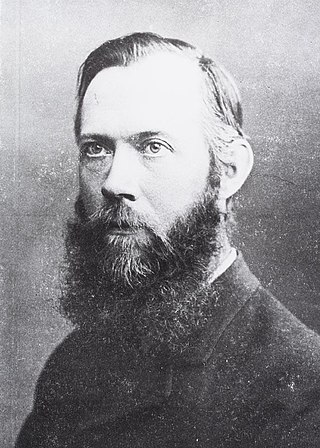
Antonie “Anton” Pannekoek was a Dutch astronomer, philosopher, Marxist theorist, and socialist revolutionary. He was one of the main theorists of council communism.
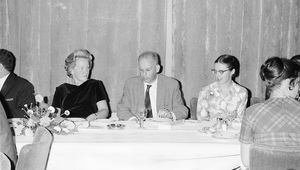
Gale Bruno van Albada was a Dutch astronomer, known for his orbital observations of binary stars and studies on the evolution of galaxy clusters.
Social patriotism is an openly patriotic standpoint which combines patriotism with socialism. It was first identified at the outset of the First World War when a majority of Social Democrats opted to support the war efforts of their respective governments and abandoned socialist internationalism and worker solidarity.
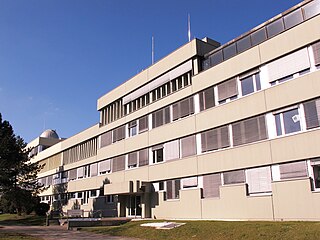
The Max Planck Institute for Radio Astronomy (MPIfRA) (German: Max-Planck-Institut für Radioastronomie) is located in Bonn, Germany. It is one of 80 institutes in the Max Planck Society (German: Max-Planck-Gesellschaft). 50°43′47.6″N7°4′9.2″E
Vorbote was a German socialist publication, the monthly central organ of the German section of the First International. It was published in Geneva from 1866 to 1871.

Edward Peter Jacobus (Ed) van den Heuvel is a Dutch astronomer and emeritus professor at the Astronomical Institute Anton Pannekoek of the University of Amsterdam.
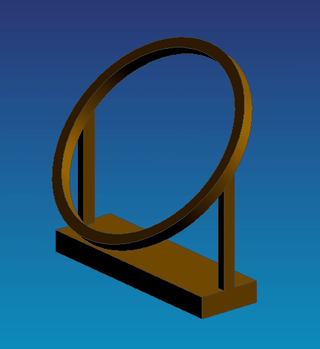
An equatorial ring was an astronomical instrument used in the Hellenistic world to determine the exact moment of the spring and autumn equinoxes. Equatorial rings were placed before the temples in Alexandria, in Rhodes, and perhaps in other places, for calendar purposes.

Communist Workers' Party of Bulgaria was a council communist party in the Kingdom of Bulgaria. It was founded in September 1921, and was modelled after the Communist Workers' Party of Germany. It was founded at a conference in the city of Slivnu, a centre of the textile industry, from the 7th until the 10th January 1922. The leadership of the party was based in Varna. The party had around 1000 members, and published Rabotchnik Iskra. The party was affiliated to the Communist Workers' International.
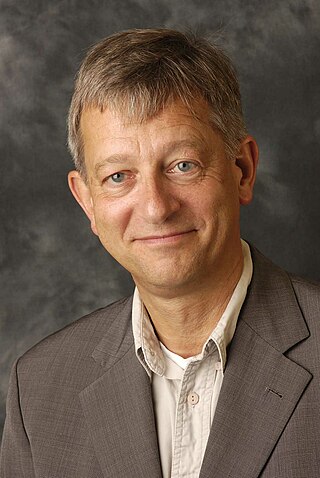
Michiel Baldur Maximiliaan van der Klis is a Dutch astronomer best known for his work on extreme 'pairings' of stars called X-ray binaries, more particularly his explanation of the occurrence of quasi-periodic oscillations (QPOs) in these systems and his co-discovery of the first millisecond X-ray pulsar. In the 1980s he gained worldwide fame with his investigation of QPOs. His revolutionary discoveries have had an enormous impact in his field of research; in effect, they have made it what it is today. Van der Klis pioneered special mathematical analysis techniques that are now regarded as the “gold standard” within his discipline.

Chekhov is a crater on Mercury. It has a diameter of 194 kilometers. Its name was adopted by the International Astronomical Union (IAU) in 1976. Chekhov is named for the Russian author Anton Chekhov, who lived from 1860 to 1904.
Peter A. Curran was an Irish astronomer, known for his work on gamma-ray bursts, stellar black holes and the Peter Curran Award.
Anna Louise Watts is a Professor of Astrophysics at the University of Amsterdam. She studies neutron stars and their thermonuclear explosions.
Rudy Wijnands is a Dutch astrophysicist. He is professor of Observational High-Energy Astrophysics at the University of Amsterdam.
Sera Markoff is an American astrophysicist and full professor of theoretical high energy astrophysics at the Anton Pannekoek Institute for Astronomy, University of Amsterdam. She is a member of the Event Horizon Telescope team that produced the first image of a black hole.
Anne Murray Archibald is a Canadian astronomer known for her observations of pulsars and as one of the developers of SciPy, a scientific programming library for the Python programming language. She is a senior lecturer in astronomy at Newcastle University in the UK.

Cornelis Easton was a Dutch journalist and amateur astronomer who wrote popular material on astronomy and climatology apart from giving lectures. As a journalist he worked with the Nieuwe Rotterdamsche Courant (1895–1906), Nieuws van den Dag (1906–1923), and Haagsche Post. In his first book, he was among the first to postulate a spiral structure for the Milky Way galaxy in which he located the solar system on the edge. A street in Dordrecht is named after him.
The Netherlands Research School for Astronomy is a graduate school specializing in astronomy, based in the Netherlands. This graduate school was founded in 1992.











